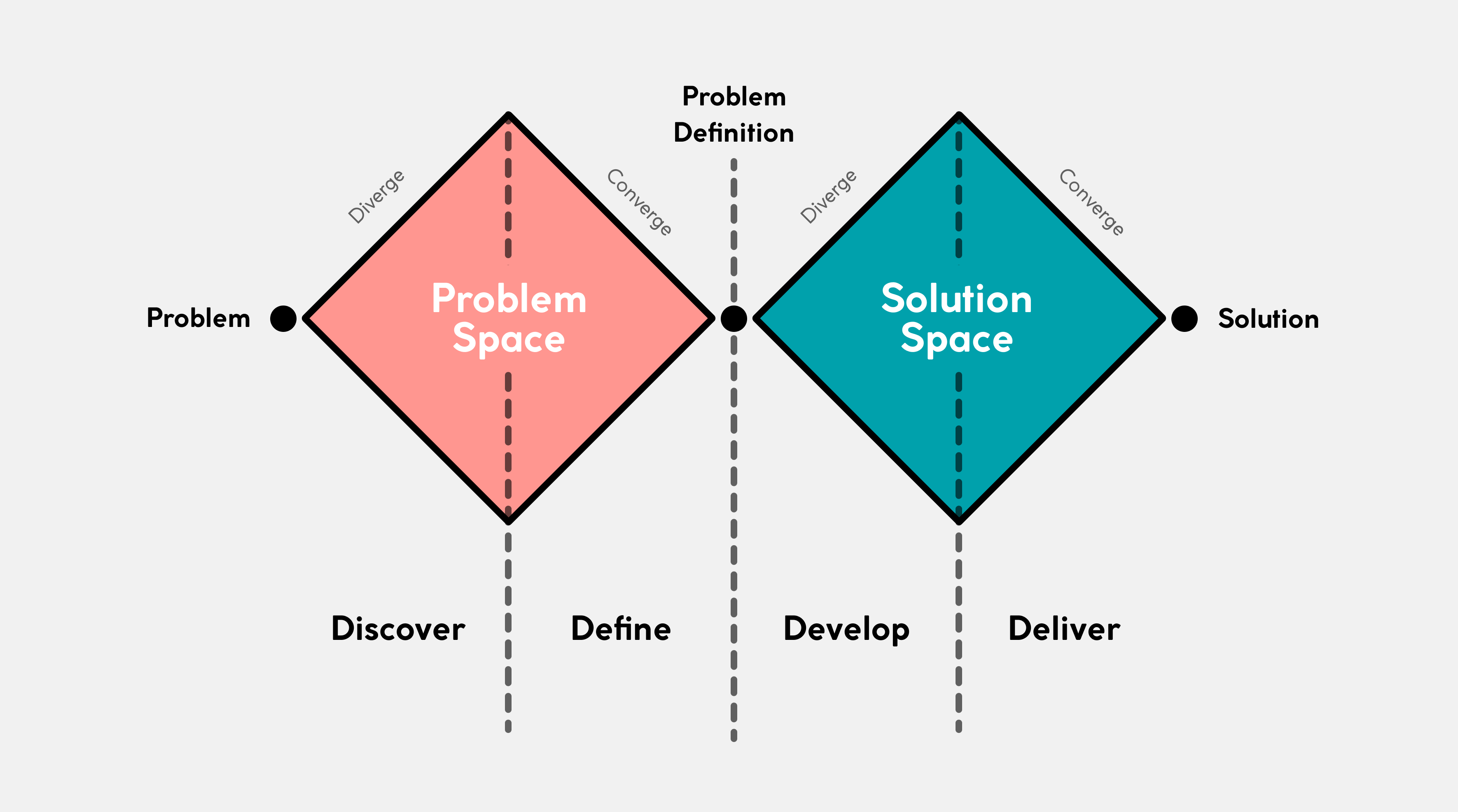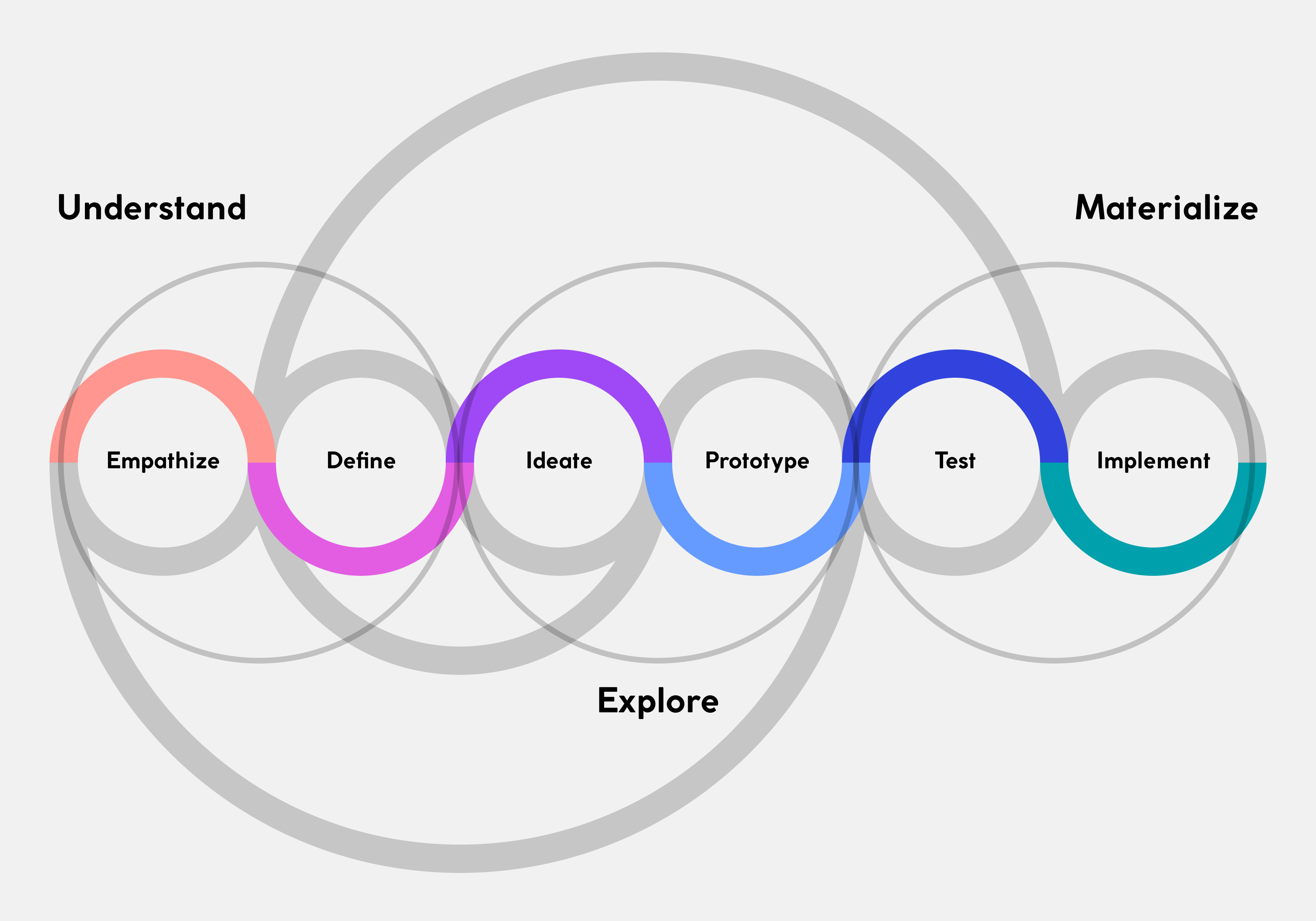Two Powerful Frameworks of Design Thinking and Their Processes
As a UX/UI designer, it is natural to explore various methods that aim to understand and solve user problems and needs. One significant and widely used approach in the field of user-centered design is Design Thinking.
Therefore, I have delved deeply into the principles and applications of Design Thinking. Quickly, I realized that I want to divide the acquired knowledge into two articles.
In my first article, the focus is on providing a fundamental understanding of Design Thinking and its associated process. The goal is to become familiar with the core principles of Design Thinking before delving into the specific methods of each phase in detail in the second article.
Why Design Thinking?
Design Thinking is a creative, user-centered design method used to develop innovative solutions for complex problems. The iterative process emphasizes the active involvement of users, with steps being repeated and adjusted to find optimal solutions. The goal is to create user-centered solutions for real needs and challenges in order to achieve a better understanding and effectiveness. Design Thinking enhances creativity and promotes collaboration in interdisciplinary teams, resulting in new perspectives to achieve innovative and impactful results.
This process emerged in the 1960s and 1970s in the field of product design and was significantly shaped by designers and engineers in the last decades. The idea emphasizes that designers are not only important for aesthetic design, but also for solving complex problems. But enough of history and theory. Let's get started!
Double Diamond vs. 6 Phases of Design Thinking
The "Double Diamond" and the "6 Phases of Design Thinking" are two concepts that are often associated with each other as they overlap to some extent. Both approaches are methods for the creative problem-solving process, but they have different focuses and emphases.
Let's first take a look at the concept of "Double Diamond".
Double Diamond
The "Double Diamond" is a model in the context of Design Thinking and is often used as a visual framework to structure the process of problem-solving and innovation. The individual phases in the process do not have to be completed sequentially. It is rather desirable to constantly jump between the phases in order to iteratively make progress both in the individual areas and overall in the development of the product. However, it is important to mention that all phases should be considered.

The Double Diamond is divided into two spaces, which are further divided into two phases.
Problem Space
Diverge in discovery: Understand the initial situation or challenge. Define what additional knowledge you need. Figure out how to obtain it. In this phase you try to open your perspective to collect as many meaningful insights as possible. Helpful methods are Interviews, User journey visualizations or Target group analysis.
Converge in definition: Understand and make sense of your research to define whether you are solving the right problem and phrase your vision accordingly. In this part you try to filter the insights you collected in the previous phase and narrow them down to get a clearer picture of your challenges. Creating personas or applying user story mapping and empathize mapping are indispensable elements. Mind mapping or the SCAMPER method are also effective and powerful methods in this phase.
Solution Space
Diverge in development: Get into the solution mode by evaluating ways and means to solve the core issues you have deduced from your research synthesis. In this phase, you are opening up again to evaluate different ways to go. Storyboarding or the 6-W method are proven methods for defining solutions. Wireframes, Prototypes, or creating Style guides are indispensable tools for effectively testing ideas.
Converge in delivery: Design, craft, develop or do whatever it takes to turn your ideas and potential solutions into something tangible. Build, test and fail to learn and to do it again. This last phase is a converging one again, which ideally results in concrete solutions that are then tested and reevaluated. With proven methods such as Tree Testing, Card Sorting, and Thinking Aloud, as well as the use of High-fidelity Prototypes, ideas can be effectively and convincingly tested with the target group.
This is how the double diamond works in general. Now let's delve into the "6 Phases of Design Thinking".
6 Phases of Design Thinking
The "6 Phases of Design Thinking" are a general framework that covers the entire design process from problem identification to solution implementation.
A classic model of the Design Thinking framework follows a sequence of Understand - Explore - Materialize. In these larger areas, there are 6 steps:

Empathize
The goal is primarily to understand the problem from different perspectives. To gain insights into the user's perspective, it is important to understand their feelings, thoughts, and actions (Feel, Think, Do). This is best achieved through User Interviews, Target audience or Competitive analyses, or User journey visualizations.
Define
Here it is about observing the problem in the real world and understanding the context. In doing so, you use all the information found in step 1 (Understanding) and tries to draw parallels to the users' current experiences. The goal is to gain deeper insights into the needs and requirements of the users. Creating Personas and using the Empathy Mapping method are just part of it. Other helpful methods that can be applied here include Product Canvas, User Story Mapping, or Customer Journey Mapping.
Ideate
Developing many crazy, creative ideas that address the unmet needs of the user identified in Step 2 (Define). No idea is too unconventional. This step is about collecting ideas from different perspectives using various, often unconventional methods. The goal is to approach the problem openly and unrestrictedly in order to develop an innovative solution. Methods for this include mind mapping, storyboarding, or the SCAMPER method. Additionally, you can use the Walt Disney method, the "Six Thinking Hats method" or the two W-methods – 6-W and 5-Why methods.
Prototype
The goal of this phase is to determine which components of an idea work. In the conceptual review, Wireframes and Prototypes can be built or Storyboards and Flowcharts can be created. To test the design aspect, Moodboards or Style guides can be developed.
Test
In this phase, prototypes or models of the developed ideas are created and tested with the users or the target audience. The purpose of the test is to gather constructive feedback, verify functionality, and ensure that the solution meets the users' needs (Feel, Think, Do). There are many methods available, including Tree Testing, Card Sorting, Feature Testing, various tracking methods (Eye tracking, Mouse tracking, Heat-mapping), Think Aloud testing, and Accessibility testing.
Implement
In the final phase of the process, the vision (the idea - the product) is implemented. It is important to ensure that the selected solution is properly implemented and effectively enhances the user's experience.
Conclusion
After you have familiarized yourselves with both models, it can be concluded that the phases of the "Double Diamond" can be related to the "6 Phases of Design Thinking":
The first diamond in the "Double Diamond" roughly corresponds to the first three phases of Design Thinking (Understand, Observe, Define), while the second diamond corresponds to the last three phases (Generate Ideas, Develop Prototype, Test).
If you're wondering which concept is more effective, I can't provide a definitive answer. However, based on my personal experience, I like the mental model of "diverging and converging" of the double diamond and the little catchier steps of the 6 phases model. As I said in the beginning: Both are useful, both have their reason for being.
Give it a try yourself to see which aspects of the respective models help you create the perfect user experience. 🙂
Summary
Surely this was not your first article on the topic of design thinking, and probably not the last either. My goal was to familiarize you gradually with this subject, to explore the individual phases of the process, and to see which methods can be used.
And as I mentioned at the beginning, it is important to me not only to provide an overview, but also to explain the individual methods in detail. I would be happy if I have piqued your interest and if you would like to read my second article as well, which includes a wide range of different methods. It'll be linked here once it's live soon.
